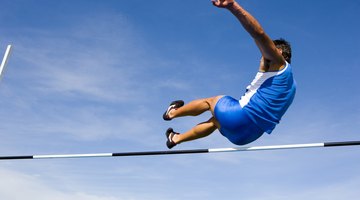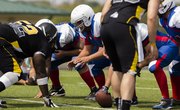College athletics have earned a reputation for trading academic rigor for success in the stadium or arena. While it's true that college athletes perform worse than non-athletes by some academic metrics, the true picture is more complex. The differences in academics between athletes and non-athletes vary by sport, gender and university. Whether college athletics helps or hurts academic performance depends on measurement and definition.
Athletes Have Lower GPAs
Grades, the most obvious measure of academic success, make college athletes looks bad. The data clearly suggests that college athletes, on average, earn worse grades than their non-athlete peers. The New York Times reported that some groups of athletes average almost 0.25 points worse than their peers. The gap is most pronounced at highly selective universities like Duke and Stanford, where athletes tend to have poorer high school academic records than their non-athlete colleagues. However, lower GPAs are just one part of the complex relationship between college athletics and academic success.
Athletes Are More Likely to Graduate
Despite their lower grades, strong evidence suggests that athletes are more likely to graduate college than non-athletes. Approximately 86 percent of NCAA Division I athletes graduate from college, according to the NCAA. Despite the media focus on college athletes leaving school early for professional sports, the vast majority of athletes stay in school and ultimately complete degrees. By comparison, the Federal Graduation Rate (including athletes and non-athletes) is only 64 percent. The availability of tutoring for athletes and strong academic oversight by coaches may account for the difference.
Different Sports, Different Results
Although athletes as a whole perform well in college, athletes in some sports consistently underperform their peers. Students in the most competitive and popular sports like basketball and football tend to earn lower grades than other athletes. According to The New York Times, recruited male athletes earn an average GPA of just 2.84. By comparison, that is 0.13 points lower than walk-on athletes and 0.20 points lower than male non-athletes. One explanation is that talented basketball and football players are held to looser admissions requirements than other athletes. Some top-tier athletes are allowed to enroll in college with poor high school grades and test scores, according to CNN.
Athletics, Gender and Academic Performance
Just as athletes' academic performance varies by sport, it also varies by gender. Female athletes persistently out-perform both male athletes and male non-athletes. Even women recruited for athletics earn high marks, with average GPAs just 0.06 points behind female non-athletes. This suggests that college athletics may bear little relationship to academic success. Instead, the best predictor may be a student's high school academic preparation.
Related Articles
References
Resources
Writer Bio
Nick Robinson is a writer, instructor and graduate student. Before deciding to pursue an advanced degree, he worked as a teacher and administrator at three different colleges and universities, and as an education coach for Inside Track. Most of Robinson's writing centers on education and travel.











